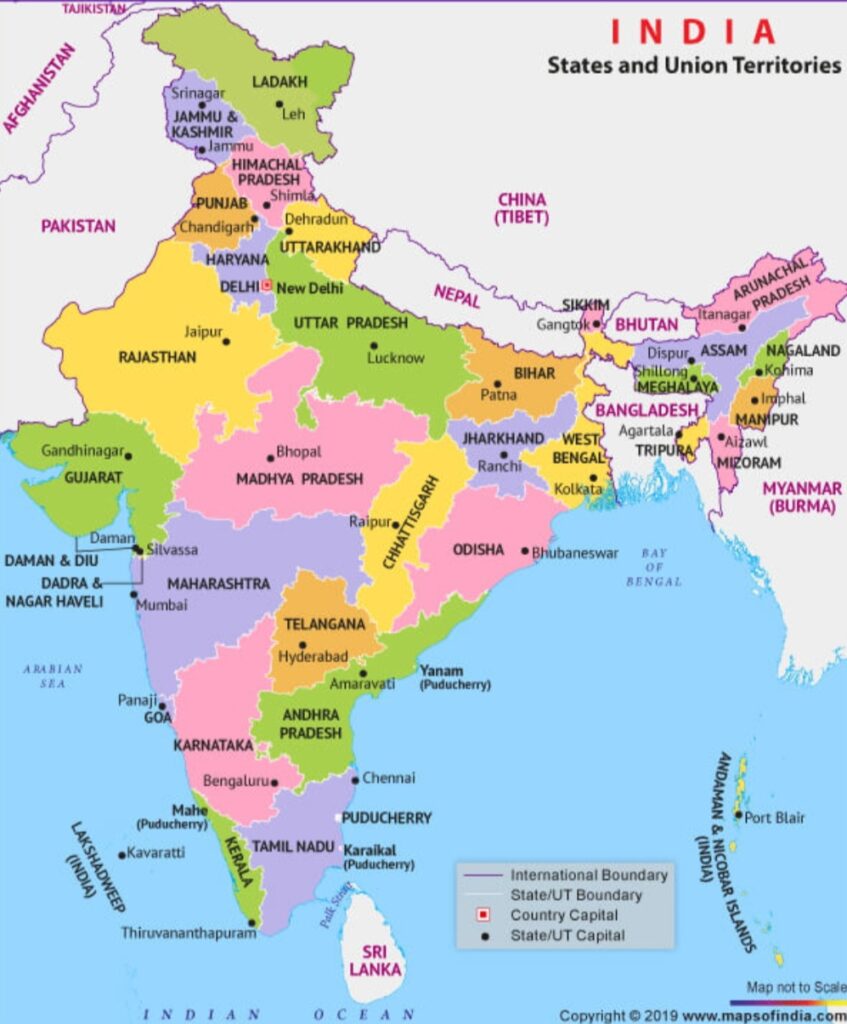By: Simran Sodhi, Guest Author, GSDN

Even as Nepal seems to calm down and stabilize, the recent upheaval in the Himalayan Kingdom has left India worried. The Gen Z protests in Nepal were reminiscent of the youth protests in Dhaka last year, and what followed in Dhaka left India anxious about its Eastern Front. It would then be a fair assessment to make at this time that India is today surrounded by a neighbourhood that doesn’t appear very friendly towards it. Instability in Nepal, a rather unfriendly govt in Dhaka, antagonistic ties with Pakistan, and other countries like Sri Lanka and the Maldives which vacillate between being friends and not-friends, India needs an urgent and serious re-think about its much touted ‘Neighbourhood First Policy’(NFP).
The NFP was first formulated in 2008 but it received a great push after 2014 under the leadership of Prime Minister Narendra Modi. His govt emphasized giving priority to India’s neighbours and building ties with them based on regional connectivity, trade and culture. India also stepped up its defence and security co-operation in the South Asian region but the political instability in many of the South Asian nations poses a perennial challenge. Also, the growing presence of China in the region and its tendency to offer loans to many of the South Asian nations for infrastructure building, etc is another challenge for India. There is also a perception in many of India’s smaller neighbours that India harbours a ‘Big Brother’ attitude towards them and that has also strained India’s ties with many in its immediate neighbourhood.
A quick look at the developments post 2020 makes it abundantly clear that the region is in a state of political instability. In 2023, the Maldives elected a new government which had campaigned on an anti-India platform. Though of late there seems to have been a change of heart in the Maldives and relations seem to be getting better. But there can be no denying the fact that the Maldives does seem to harbour an anti-India sentiment that was on full display in their elections in 2023.
For India, the hardest blow came in 2024 with the ouster of Bangladesh’s Sheikh Hasina, and with Muhammad Younus becoming Bangladesh’s Chief Advisor. Delhi-Dhaka ties saw a golden period under Hasina who sided with India on many major issues and for India, the Eastern Front was a place of calm and friendship. Younus, on the other hand, has been quite vocal in his critique of India, and in late Sept this year while in New York to attend the United Nations General Assembly (UNGA), he publicly hit out at India. He stated that India did not like the student protests that took place in his country last year, and that by providing Hasina a safe haven in India, India is further spoiling its ties with Bangladesh. He even went on to blame India for SAARC becoming non-functional.
Nepal has a similar story for India, in many respects. The Gen Z protests have seen the established politicians get a boot and the country is now gearing up for elections in 2026. India has wisely been careful to not get too involved in the internal politics of Nepal because the pushback from the Himalayan Kingdom carries the same rhetoric, that of India playing ‘Big Brother”.
With neighbours like Pakistan, India’s ties today are almost a cipher. With the Taliban in Afghanistan, India has started an outreach but there is nothing very substantial there as of today. Bhutan and Mauritius (extended neighbourhood) are today the two spots in India’s neighbourhood where India is maintaining excellent ties. But even in Bhutan, the Chinese are working overtime to increase their foot print.
In short, India today needs to go back to the boardroom and do a serious re-think of its ties with its neighbours. The present scenario is grim and also poses a serious challenge to India’s security as is evident with the coming together of Pakistan-China and Bangladesh. India also needs to either breath new life into SAARC or look at other regional groupings which can help South Asia integrate into a closer unit. SAARC held its last meeting in 2014. India has maintained that since Pakistan continues to sponsor cross-border terrorism into India, it cannot be in attendance in SAARC. That has helped finish off SAARC as a regional grouping, more or less. India then turned its attention to BIMSTEC (Bay of Bengal Initiative for Multi-Sectoral Technical and Economic Cooperation) grouping that excludes Pakistan for regional cooperation. But BIMSTEC really hasn’t shown the kind of positive trajectory one expected from it.
With time not on its side, as the recent events in Dhaka and Nepal show, India needs to swiftly re-think its Neighbourhood First Policy. India also needs to invest more in bilateral relationships with its smaller South Asian neighbours; and either revive SAARC or put in place a new regional grouping for South Asia that will bind all together. If India doesn’t act fast, it might prove to be too late with China breathing down the region’s neck.

About the Author
Simran Sodhi is a Delhi-based journalist and foreign affairs analyst. She holds a Masters in International Relations from the American University in Washington DC. In 2009, her book ‘Piercing the Heart- Untold Stories of 26/11’ was published. She has written for a number of leading national and international publications. She tweets at @Simransodhi9

